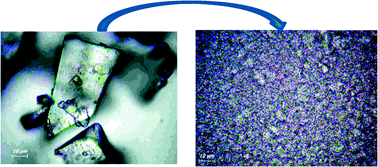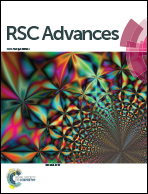Effects of strongly aggregated silica nanoparticles on interfacial behaviour of water bound to lactic acid bacteria†
Abstract
The effects of changes in the hydration degree of lactic acid bacteria (LAB), dispersion media composition and interactions with silica TS 100 and silylated silica gel Sipernat 50 were analysed using 1H NMR and DSC methods. Several types of water were found in wetted LAB. There were strongly and weakly bound waters determined from their changes in the Gibbs free energy. Strongly and weakly associated waters were identified by changes in the chemical shifts of the proton resonance for hydroxyls participating in hydrogen bonds. Changes in the characteristics of water bound to LAB depend on the water content, dispersion medium and co-adsorbate types, and the presence of silica. In DSC thermograms, changes in the values of enthalpy for exotherms (upon cooling) and endotherms (upon heating) per gram of bound water were much lower than that for bulk water because of the freezing point depression characteristic for bound water, which, therefore, could not form ice crystallites.


 Please wait while we load your content...
Please wait while we load your content...